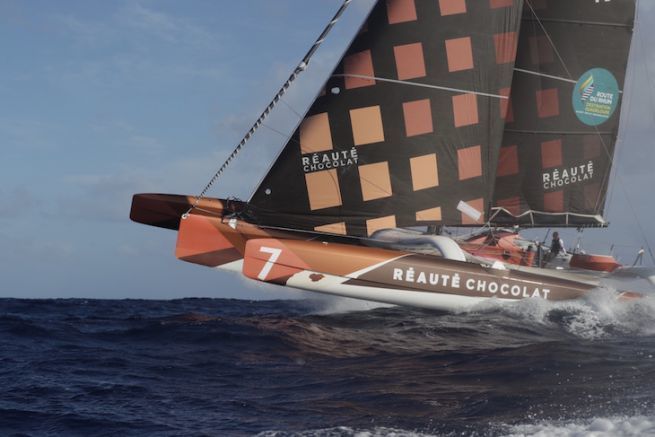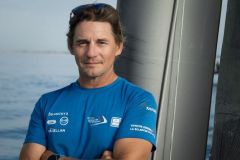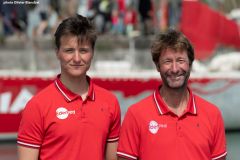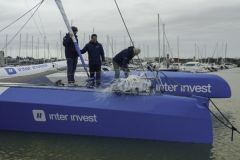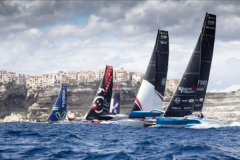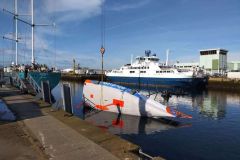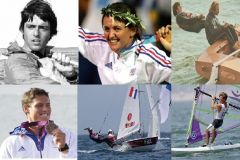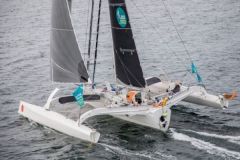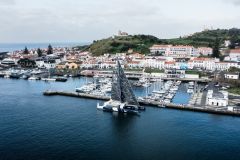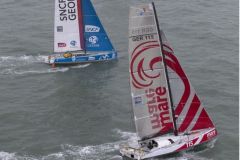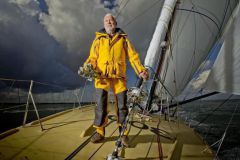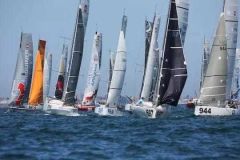Armel Tripon (Réauté Chocolat) is the third all-category to cross the finish line of the 2018 Route du Rhum. He arrived in Guadeloupe this Thursday, November 15 at 16h32'40 (Guadeloupe time) after 11 days, 7 hours, 32 minutes and 40 seconds of racing and 3 days 17 hours, 10 minutes and 53 seconds after Francis Joyon, winner in ULTIME arrived in the night of November 11 to 12.
Two years after his debut in the Multi50, Armel Tripon won his second major solo transatlantic race on his trimaran. After the Mini-Transat in 2003, then the Figaro Bénéteau, the Class40, the IMOCA and the Multi50, the skipper will once again be racing in a 60-foot boat, which he is building for the 2020 Vendée Globe.
A look back at Armel Tripon's journey on the Multi50 Réauté Chocolat
"The first Multi50 to reach the door of the Cape Fréhel Banque Populaire Grand Ouest Trophy after a great start, Armel started the race in the lead. On the evening of November 4, he was also the first to hit the soft winds in the center of the low-pressure system that was blocking the competitors' route off Brittany. He spent most of the night stuck at less than five knots in erratic winds. Lalou Roucayrol (Arkema) was the first to get out of this trap. When Armel escaped in turn, he was 30 miles behind the new leader Arkema. Their competitors will not be so lucky and will have to wait longer at very low speed. Soon, Lalou and Armel were the only ones to head south in an attempt to escape the bad weather that was to take hold of a huge area of the Atlantic, from the tip of Brittany to the latitude of Gibraltar.

On the evening of November 5, they were at Cape Finisterre while the rest of the fleet was heading west to pass the first front. The sailing conditions were difficult, a second low pressure system was announced and Lalou, exhausted, decided to stop for 24 hours in Porto (Portugal) to let the heavy weather pass. Armel, on the other hand, is tracing his wake alone towards the South. On November 6th, the lateral gap with the western group was 500 miles!
On November 8, Réauté Chocolat was sailing downwind off Madeira, while the others were still in the rough off the Azores. The contrast between the sailing conditions is striking, with the majority of the fleet tacking in winter conditions while Armel is sailing downwind in the sunshine. Closer to the direct route, Thibaut Vauchel-Camus (Solidaires en Peloton - ARSEP) and Erwan Le Roux (FenêtreA-Mix Buffet) were in the lead for a long time. But by dint of hitting the cross seas, their trimarans suffered and the two men were forced to stop in Ponta Delgada, with the mainsail traveller track torn off for the first and the automatic pilot stranded for the second. Réauté Chocolat is doing well. On November 9, he took the lead and never let go again, even increasing his lead to 300 miles.
Armel is a "youngster" in the Multi50 class, which he joined only two years ago after acquiring Yves le Blévec's former Actual, a Verdier-Neyhousser design on which he added the one-design foils allowed by the rules. To make up for his lack of experience against Erwan Le Roux and Lalou Roucayrol, the two most experienced men, who are the favourites for this transatlantic race, the sailor from Nantes has done a lot of solo sailing, looking for bad weather. At the start in Saint-Malo, he was an outsider. my goal is to get to the right place," he said a few days before the start. Then, to get a good place and play with my weapons
For 11 days 7 hours 32 minutes and 40 seconds, it was with his weapons and his choices that he played, privileging the marine sense to the optimal route, the preservation of the equipment to the theoretical performance"
